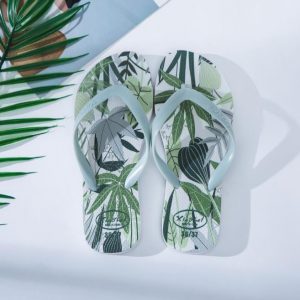If you have plantar fasciitis, choosing the right flip flops can help provide some relief from foot pain. However, it’s essential to remember that flip flops, in general, are not ideal for individuals with plantar fasciitis due to their lack of arch support and cushioning. That said, some specially designed flip flops offer better support and can be more suitable for those with foot conditions. Here are some features to look for in flip flops for plantar fasciitis:
Arch Support: Opt for flip flops with built-in arch support. Look for models with contoured footbeds that help support the natural arch of the foot and distribute pressure more evenly.
Cushioning: Choose flip flops with adequate cushioning in the heel and forefoot areas to provide shock absorption and reduce impact on the plantar fascia.
Orthotic Footbeds: Some flip flop brands offer orthotic or medically designed footbeds that are specifically crafted to alleviate plantar fasciitis symptoms.
Heel Cupping: Look for flip flops with deep heel cups that stabilize the heel and help align the foot properly.
Firm Sole: While cushioning is essential, the sole should also be firm to provide stability and prevent overpronation, which can exacerbate plantar fasciitis.
Wide Straps: Wide straps can help distribute pressure more evenly across the foot, reducing the strain on the plantar fascia.
Adjustable Straps: Flip flops with adjustable straps allow you to customize the fit for better support and comfort.
Avoid Flat Flip Flops: Steer clear of completely flat flip flops, as they provide minimal support and can worsen plantar fasciitis pain.
Avoid Flip Flops with Toe Posts: Toe posts can irritate the area between the toes, potentially aggravating foot pain.
Quality Materials: Choose flip flops made from high-quality, durable materials to ensure they last and provide consistent support.
Remember that while these features can help with plantar fasciitis symptoms, flip flops should still be used in moderation. They are not a substitute for properly fitted and supportive shoes. For more significant relief from plantar fasciitis, consider wearing supportive footwear designed specifically for individuals with foot conditions. Additionally, consult with a podiatrist or healthcare professional to develop a comprehensive plan for managing plantar fasciitis and to get personalized recommendations for footwear and treatments.









